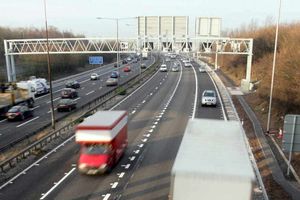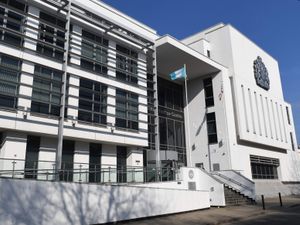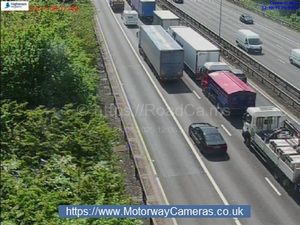Next generation speed cameras come to the M6
Hard-to-spot speed cameras are to be installed on a stretch of the M6, prompting fears they will snare thousands of unsuspecting motorists.

The Highways Agency says the new cameras, part of a £2.1 million project across the country, will be able to monitor all four lanes of the motorway, including the hard shoulder, from the overhead gantries.
Conventional cameras are trained on one lane.
But there are calls for the grey camera housings to be painted yellow like the old fashioned Gatso speed cameras found on normal roads.
They will be used between junctions 10a for the M54 and 13 Stafford of the M6, part of the £87.5 million smart motorways project which will bring in variable speed limits and open the hard shoulder to traffic in busy times.
John Spellar, MP for Warley and a former transport minister, said: "When I was transport minister I ordered that speed cameras should be painted a clearly visible yellow.
"The aim should be to adjust behaviour, not to catch out motorists.
"It seems these are being sneaked into the managed motorway network. I instigated this programme of hard shoulder running which gives a big boost to capacity and better journeys. However, too often speed restrictions are left on when the congestion has passed.
"The police and Highways Agency should get their act together and stop fleecing the hard pressed motorists and should be told to return to painting cameras yellow."
The cameras, called the Hadecs3, will help enforce variable speed limits on motorways.
But when the speed limit is at its normal 70mph they will not be switched off and can catch people going over the national speed limit.
They are also able to catch more people than the average speed camera system, which required a pair of cameras to catch cars as they went into and out of a controlled zone.
The new cameras will be attached to the overhead gantries that house the variable speed limit signs and will be front and rear facing.
Hugh Bladon, of the Alliance of British Drivers, said: "The 70mph limit is not a speed that a lot of people bother to observe any more.
"It was originally brought in as an experiment and was made permanent without any real testing. It was brought in at a time when the stopping power of cars was a bit like stopping an oil tanker, and the maximum speed of most cars was 74mph.
"We've moved on now, some 50 years later we have cars that stop much more quickly.
"The amount of traffic that exceeds the 70mph limit is enormous. Most people are driving at 80mph on motorways, and these are our safest roads in the country."
A spokesman for the Highways Agency said: "Variable speed limits on smart motorways are primarily there to smooth traffic flow, reduce congestion and make journeys more reliable.
"There are clear signs where cameras are in place and the new cameras are more visible than the previous versions."




